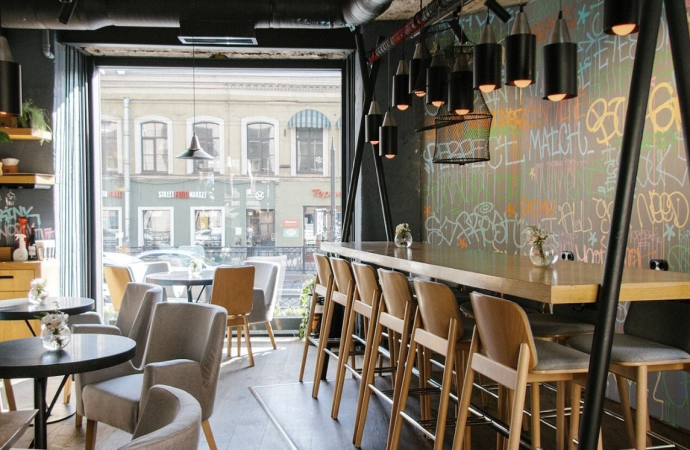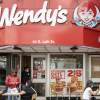Owning a restaurant can seem like an exciting venture—delicious food, happy customers, and a lively atmosphere—but behind the scenes, it requires much more than just a great menu. From budgeting and designing the menu to selecting the right location and hiring dependable staff, starting a restaurant business involves careful planning and continuous attention. It’s about

Owning a restaurant can seem like an exciting venture—delicious food, happy customers, and a lively atmosphere—but behind the scenes, it requires much more than just a great menu. From budgeting and designing the menu to selecting the right location and hiring dependable staff, starting a restaurant business involves careful planning and continuous attention. It’s about creating strategies that balance creativity with strong financial management while navigating the challenges of the restaurant industry. Let’s explore the key elements of building a solid restaurant business plan and some hidden pitfalls—from financial risks to local competition—that could trip up even the most experienced entrepreneurs.
Crafting a Strong Restaurant Strategy
Running a restaurant is both exciting and challenging. It’s not just about cooking meals; it’s about managing a whole operation, including employees, suppliers, and an ever-changing market. Before opening your doors, you need to address several key strategic elements—like creating a unique concept and managing finances. Let’s dive into the basics of a restaurant business plan so you’re set up for success in this competitive industry.
Define Your Concept and Know Your Target Market
The first thing to decide when starting a restaurant is what type of establishment you want to run. Will it be a casual spot serving comfort food or an upscale dining experience? Understanding your target audience’s preferences and figuring out what makes your restaurant stand out is essential. For example, focusing on locally sourced ingredients or offering a unique cuisine could attract customers looking for those specific experiences.
- Research the competition: Check out similar restaurants in your area to see what they offer. This helps you refine your own niche.
- Consider the demographics: A budget-friendly menu might work well near a university, while gourmet dishes could be more appealing in an upscale neighborhood.
Financial Planning and Budgeting
A solid financial plan is crucial for any restaurant. The costs of opening can vary greatly, depending on the type of restaurant, from a small family-run café to a high-end bistro. You’ll need to budget for things like lease, kitchen equipment, licenses, marketing, and staff wages.
- Create a financial cushion: Try to set aside enough funds to cover at least six months of expenses. This will help during the initial phase when foot traffic can be unpredictable.
- Explore funding options: Consider traditional bank loans, crowdfunding, or partnerships. Starting small with pop-up events or food trucks is also a good way to test the market before committing to a permanent location.
Once you’re open, keep a close eye on profit margins, especially as food prices fluctuate. Using real-time accounting tools can help you quickly identify and adjust to any spikes in expenses.
Menu Design, Pricing, and Brand Identity
Your menu plays a big role in defining your restaurant’s identity. A carefully crafted menu can attract customers, but it also needs to be profitable. One strategy is to pair popular, high-demand dishes with less expensive items that offer high margins.
- Set smart prices: Factor in both direct costs (ingredients) and indirect costs (overhead) when pricing your dishes. Make sure the price aligns with the perceived value of each dish.
- Stay consistent with branding: Whether you want a cozy café vibe or a modern, sleek restaurant, your logo, interior design, and menu should all align with your brand image.
Don’t forget to consider your online presence. High-quality photos and quick responses to customer inquiries on social media can increase engagement and drive more visits.
Marketing to Boost Visibility
Getting customers through the door is one of the biggest challenges, especially in a crowded market. Digital marketing tools, particularly social media, have leveled the playing field, making it possible for smaller restaurants to reach a wide audience with a creative approach.
- Attract customers through social media: Share mouthwatering images on platforms like Instagram or TikTok. You can also create referral programs to encourage loyal customers to bring in new ones.
- Use behind-the-scenes content: Share videos of your kitchen in action or highlight daily specials to create authentic connections with potential customers.
Don’t forget traditional marketing methods like flyers, local partnerships, and community events, which can help increase your visibility in your neighborhood.
Managing Day-to-Day Operations: Staffing and Quality Control
The success of your restaurant depends on delivering consistent service and a memorable dining experience. Staffing issues, such as high turnover or untrained employees, can negatively impact your reputation. Train your staff thoroughly, ensuring they know the menu inside and out and that kitchen staff follow standardized recipes.
- Manage inventory effectively: Over-ordering leads to waste, while under-ordering can disappoint customers. Use inventory management software to keep track of your stock and reorder in time.
- Create clear management systems: Empower floor managers to make decisions on the spot, which helps resolve issues quickly without waiting for top-level approval.
Also, invest in a good POS (Point of Sale) system to manage orders and gather real-time data on sales and inventory.
Common Pitfalls to Avoid
While a solid plan lays the foundation for success, there are several challenges to be aware of. Let’s take a look at some of the most common mistakes restaurant owners make and how to avoid them.
Unexpected Financial Challenges
Even with the best financial planning, unexpected cost hikes can arise. For instance, food prices might increase due to supply shortages, or new taxes or fees could be introduced by local governments.
- Prepare for financial setbacks: Keep an emergency fund and stay flexible with your menu. If certain ingredients become too expensive, consider substituting them or adjusting your offerings.
- Regularly analyze your finances: Monitoring your expenses weekly or monthly can help you identify and address issues early, whether that means renegotiating supplier contracts or adjusting staff schedules.
Expansion Pitfalls
Expanding too quickly is a common mistake. If your first location is doing well, it’s tempting to open a second or try a new concept. But growing too fast can spread your resources too thin, leading to operational problems.
- Don’t rush expansion: Wait until your first location is stable before thinking about opening a second. If you do decide to expand, try testing the waters with catering or pop-up events.
- Understand legal requirements: Expanding into new areas means you’ll have to deal with different regulations and permits. Make sure you’re aware of these before opening in a new location.
Staffing and High Turnover
One of the main reasons restaurants fail is staffing issues. Employee turnover is high in the hospitality industry, and constant hiring and training can drain resources.
- Boost employee morale: Offer flexible schedules or performance incentives to retain staff. A positive workplace culture encourages employees to stay longer.
- Improve customer service: High turnover can leave your customers feeling neglected or frustrated, which damages your brand. Keep your staff well-trained and motivated, as their positivity reflects on the customer experience.
Neglecting Health and Safety Regulations
Health and safety standards are not optional. Ignoring them can lead to fines or even a shutdown. Make sure you comply with both local and federal regulations, from food temperature checks to allergen labeling.
- Stay on top of compliance: Implement regular checks and ensure your staff follows hygiene and safety protocols.
- Differentiate through cleanliness: Maintaining high health and safety standards can set you apart from competitors, building trust with customers.
Community Relations and Crisis Management
A restaurant’s success is closely tied to its relationship with the community. A minor issue, like a noise complaint, can escalate if not handled properly. Be prepared for unexpected crises like power outages or supply chain disruptions.
- Engage with your community: Sponsor local events, partner with charities, or host special nights to foster positive community relationships.
- Have a crisis plan: Be ready with backup suppliers or a temporary menu in case of emergencies. This shows your customers you can handle challenges while continuing to serve them.
Owning a restaurant is no easy feat, but the rewards can be immense. Success requires a comprehensive approach: detailed planning, financial oversight, strong staff management, and a commitment to health and safety. By avoiding common mistakes and staying flexible, you can build a thriving restaurant that customers love to return to.

















Leave a Comment
Your email address will not be published. Required fields are marked with *